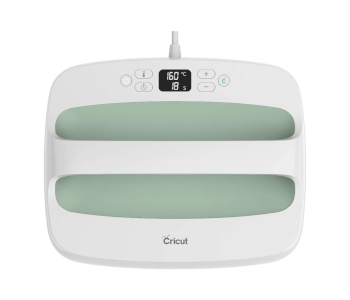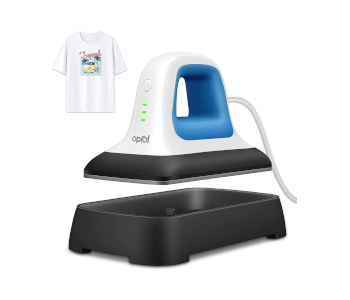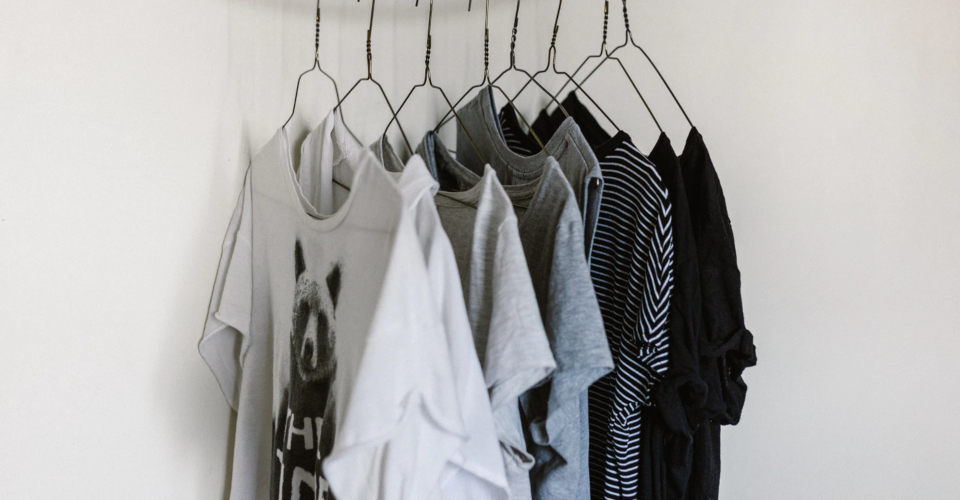Heat Transfer Press: How It Works, Pros and Cons
For our readers who are old enough, some of you may have experienced first-hand how to make your own t-shirts using screen printing. Technology has evolved in leaps and bounds since then. Nowadays, making customized t-shirts is a lot faster and easier.
Customized t-shirt making via heat transfer press machines has become incredibly common in the last decade or so. It’s also a fairly versatile technology, as it can also be used to create custom mugs, plates, umbrellas, mousepads, and jigsaw puzzles. What exactly is a heat transfer press machine and how does it work?
How does a heat transfer press work?
The objective of a heat transfer press is to transfer a graphic or design from one substrate to another. In most cases, this involves the transfer of designs from a special transfer paper to fabric, paper, plastic, or ceramic material. As the name implies, a heat transfer press uses a combination of heat and pressure to achieve this objective.
The heat transfer paper is a central component of this process. By printing on heat transfer paper using just a standard inkjet printer, just about any digital design can be transferred to the preferred substrate. Since no special printer is needed, this also greatly reduces the startup cost for a heat transfer-based business.
Nowadays, there are several different options for heat transfer press machines. Most of these are still in the flatbed or clamshell orientation, but rotary heat presses are becoming more common as they are more easily automated. To that end, both automated and manually operated heat transfer press machines are available. One can also opt for a semi-automated option. As you would expect, heat transfer press machines with automated features are generally more expensive.
Heat transfer presses have proven to be very popular for small-time entrepreneurs who want to start custom t-shirt businesses. Small heat press machines can cost less than $200 nowadays and can even come with digital temperature read-outs and timers. Printing on heat transfer paper can be done using a standard inkjet printer.
With a very low technical and financial barrier to entry, the development of heat transfer press technology has led to a slew of businesses that offer custom-designed products in the last couple of years.
Pros and cons of heat transfer press
To assess the merits of heat transfer press technology, it’s worth comparing it to other technologies that are developed for the same objectives – screen printing and sublimation printing. What are the strengths and drawbacks of heat transfer press relative to the alternatives?
PROS:
Low startup costs
A major factor for why heat transfer press technology has become so popular is its low cost. You can probably buy all the hardware and accessories you will need to start heat transfer printing for less than $300.
While old-fashioned screen printing is probably still cheaper, a sublimation printing business will cost just a bit more to start up. Just like in heat transfer printing, you will need a special sublimation machine and sublimation paper. The price gap has certainly gotten smaller in the past couple of years, but heat transfer press still holds a slight advantage.
User-friendly
Ideal for low-volume orders
Each design for heat transfer printing is made separately, making it an ideal method for handling low-volume orders. It’s not uncommon for a small t-shirt business to receive orders for one-off designs. This is still economical and viable in heat transfer printing.
Good versatility and resolution of designs
Heat transfer printing has made the design process for custom products incredibly easy. By simply printing any digital design on heat transfer paper, the design can be embedded in a wide range of fabrics, ceramics, and other materials. There is no longer any need to limit the design in terms of the number of colors or to do multiple printing passes, which is a huge limitation of old-fashioned screen printing.
CONS:
Not ideal for high-volume orders
Screen printing may be an old and labor-intensive technique, but no other method can beat its economics and turnaround speed for high-volume orders. Making a stencil (or several stencils) for screen printing may take a bit of work, but it can be used to reproduce thousands of copies of a design. This reduces the per-unit cost of products for screen printing, making it a lot more competitive.
The same cannot be said for heat transfer press. In fact, the economy of heat transfer press technology does not scale favorably at all with volume. When dealing with high-volume orders, heat transfer press can prove to be both too slow and too expensive.
Feels bulky on fabric
Heat transfer pressing does not result in the ink becoming part of the fabric. Instead, an entire layer of the heat transfer paper is added on top of the fabric, making the garment significantly heavier, less flexible, and less breathable. When printing large designs, this can make a t-shirt or any piece of clothing downright uncomfortable.
The transferred design deteriorates quickly
Another consequence of heat transfer pressing adding a whole layer to the garment is that the designs tend to crack and peel away over time, especially when washed frequently. This is not the case for techniques that integrate the ink fully into the fabric, such as screen printing or sublimation printing.
Heat transfer printing has probably become very prevalent due to how inexpensive the equipment is and how “fun” the potential output could be. While there’s no discounting that heat transfer printing provides one of the easiest ways to create custom-designed products, it is by no means the perfect technology.
Screen printing may be old and impractical for low-order volumes, but it still provides the best comfort, quality, and longevity for custom-designed fabric. Sublimation printing is a somewhat more expensive technology that also provides most of the benefits of screen printing but is more appropriate for one-off orders.
Where to buy a heat transfer press machine
1. BEST VALUE: Cricut EasyPress 2 Heat Press Machine

Cricut has made quite a name in the heat transfer press industry by way of their portable and cleverly designed heat press machines. This version has an area measuring 12” x 10”, but they also sell other much smaller versions.
What makes the Cricut EasyPress particularly user-friendly is the fact that it’s basically an improved version of your standard household iron. Its advantages include a larger heating surface, more even heating, digital temperature control, and a built-in digital timer. This should help users create digital transfers with more consistent quality, especially those who started out using household irons.
The design of the Cricut EasyPress is probably one factor that has contributed to the success of the product. Not only does it feature a modern, minimalist aesthetic, but it was designed specifically for maximum portability and ease of storage. This makes it less of a commitment in terms of working space compared to clamshell heat transfer press machines.
The Cricut EasyPress isn’t exactly the cheapest option available, but it’s one of the few portable heat transfer machines that can deliver at a high level of quality.
2. BEST BUDGET: Oprol Heat Press Machine

A major selling point of heat press machines is that they can be incredibly cheap. You don’t need to look further than the Oprol Heat Press Machine for proof. This lightweight hardware costs less than $100, is incredibly compact and lightweight, and fares much better than a household iron.
Although it might look like an iron, the Oprol machine delivers on qualities that place it a few notches higher in terms of quality and consistency. The ceramic-coated heating surface delivers heat more evenly than an iron, while its temperature settings provide better control over heat transfer performance.
Although its size and weight make the Oprol easy to store, it also means exerting extra effort to ‘press down’ on the iron during heat transfer. This is also less ideal for heat transfer of large decals. If you just want to make custom shirts or baby clothes for fun, then the Oprol is a great low-cost option.
3. BEST OVERALL: PowerPress Industrial-Quality Heat Press Machine

If you’re considering buying a heat transfer press to start a business, then you need one with industrial-level specs. This 15” x 15” press from PowerPress is an excellent option that will only set you back by a little more than $200.
The PowerPress industrial heat press machine has all the features you could want for consistent and fast heat transfer. It has a heating element that can go up to 455 °F, a digital temperature indicator, a built-in timer, a Teflon-coated heating plate, and a silicon baseboard. Being a fairly big machine, the PowerPress is going to take up significant desk space.
One advantage of using a large heat transfer press is that its weight naturally provides the pressure needed for the quick and consistent transfer of the design to the substrate. The heated plate also comes with an extended handle so you can press firmly down on the plate during transfer. The large heated plate is also great for working with super-sized decals.
Final thoughts
Whether you just want to make custom t-shirts for fun or do it as a side gig, heat transfer press is a technology worth considering. It’s easy to use and is incredibly versatile, so you only need to worry about the quality of designs you could come up with. We have only featured three models in this list, but they are enough to demonstrate the wide range of different heat transfer machines available today in varying price points, sizes, and features.
If you’re planning to build a business centered on heat transfer of designs on shirts, we have to warn you that this technology is far from being novel or new. Since it’s so easy to use, you may quickly find yourself in a market with lots of competition.
For this reason, it’s just as important that you focus on the quality of your designs and products. Perhaps it would be easier to find a sub-niche to market your products to. How about focusing on specific genres in science fiction, music, or popular culture? You can also try coming up with original artwork. Keep in mind that your designs are what is going to make you stand out – not the fact that you own a heat transfer press.


Really appreciate your article